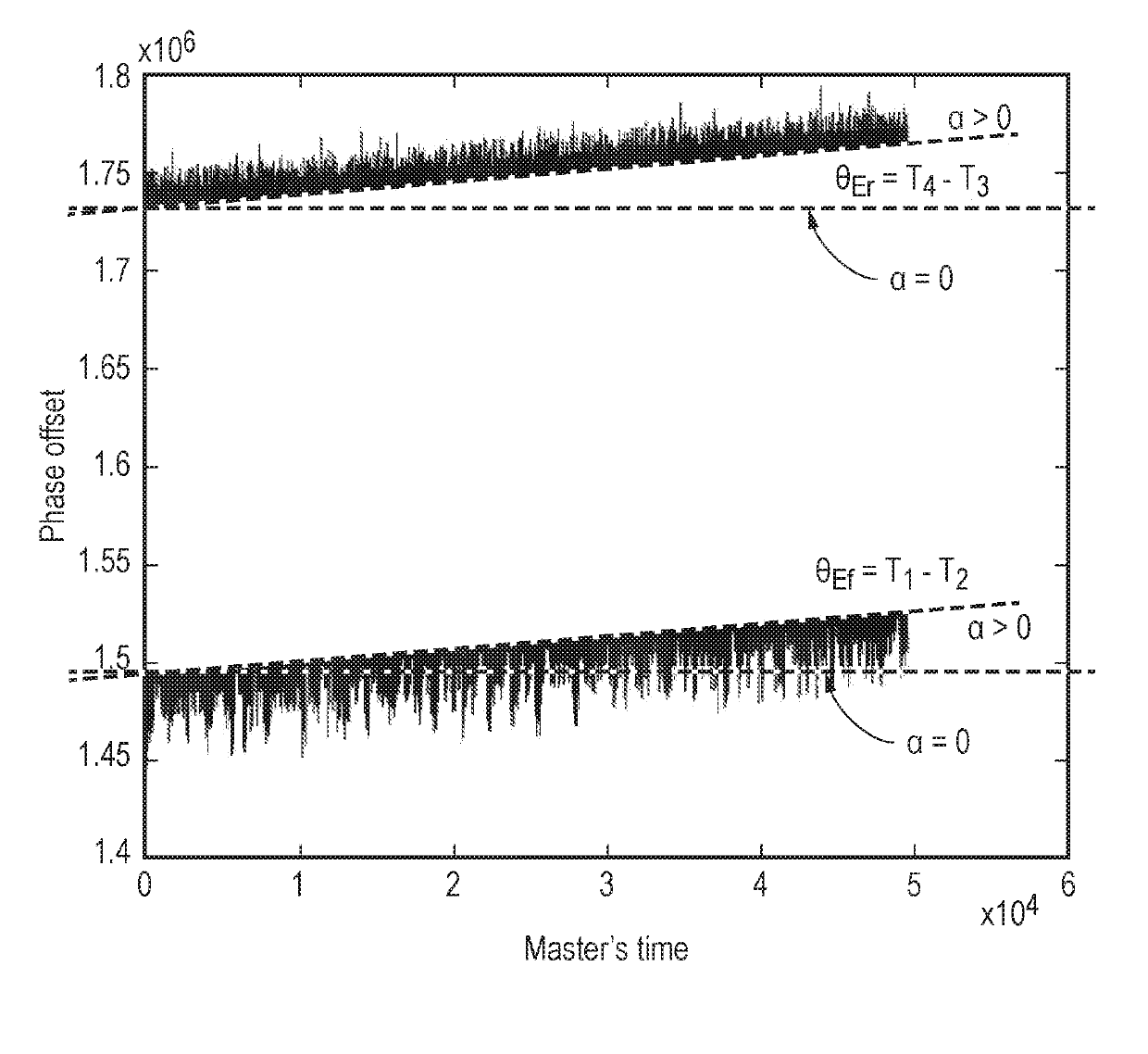Systems and methods for estimating skew
a technology of estimating system and skew, applied in the field of methods and systems for estimating skew, can solve the problems of long time to converge to an accurate set of estimated parameters, communication paths that are not perfectly symmetric, etc., and achieve the effect of minimising a cost function
- Summary
- Abstract
- Description
- Claims
- Application Information
AI Technical Summary
Benefits of technology
Problems solved by technology
Method used
Image
Examples
Embodiment Construction
[0010]At their broadest, aspects of the present invention provide for methods and devices which obtain an estimate of the skew value of a local clock using a least squares fitting algorithm.
[0011]A first aspect of the present invention provides a method of estimating a skew value of a local clock in a time client compared with a master clock in a time server, the method including the steps of: exchanging, between the time server and the time client, timing messages and timestamps representing the times of sending and times of receipt of the timing messages; and estimating a skew value of the local clock using a least squares fitting algorithm which minimises a cost function between each data point in a dataset and a zero skew state, wherein each data point in the dataset represents a phase offset of the local clock calculated from the timestamps.
[0012]Preferably the time client and the time server are connected by a network such as a packet network (using technologies such Ethernet,...
PUM
 Login to View More
Login to View More Abstract
Description
Claims
Application Information
 Login to View More
Login to View More - R&D
- Intellectual Property
- Life Sciences
- Materials
- Tech Scout
- Unparalleled Data Quality
- Higher Quality Content
- 60% Fewer Hallucinations
Browse by: Latest US Patents, China's latest patents, Technical Efficacy Thesaurus, Application Domain, Technology Topic, Popular Technical Reports.
© 2025 PatSnap. All rights reserved.Legal|Privacy policy|Modern Slavery Act Transparency Statement|Sitemap|About US| Contact US: help@patsnap.com

